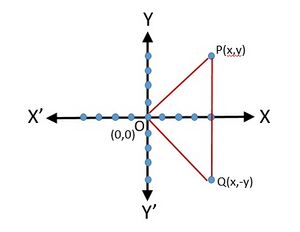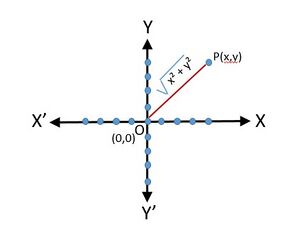|
|
| Line 8: |
Line 8: |
| Geometrically , the point <math>P(x,y)</math> is the mirror image of the point <math>P(x,y)</math> on the real axis (Fig 1) | | Geometrically , the point <math>P(x,y)</math> is the mirror image of the point <math>P(x,y)</math> on the real axis (Fig 1) |
|
| |
|
| Example: Find the conjugate of <math>\frac{(3-2i)(2+3i)}{(1+2i)(2-i)}</math> | | === Example === |
| | Find the conjugate of <math>\frac{(3-2i)(2+3i)}{(1+2i)(2-i)}</math> |
|
| |
|
| <math>\frac{(3-2i)(2+3i)}{(1+2i)(2-i)}</math> | | <math>\frac{(3-2i)(2+3i)}{(1+2i)(2-i)}</math> |
Revision as of 13:22, 11 November 2023
The modulus of a complex number gives the distance of the complex number from the origin in the Argand plane, whereas the conjugate of a complex number gives the reflection of the complex number about the real axis in the Argand plane.
Conjugate of a Complex Number

Fig 1 - Conjugate of a complex number
The representation of a complex number  and its conjugate
and its conjugate  in the Argand plane are, respectively , the points
in the Argand plane are, respectively , the points  and
and 
Geometrically , the point  is the mirror image of the point
is the mirror image of the point  on the real axis (Fig 1)
on the real axis (Fig 1)
Example
Find the conjugate of 










Answer: The conjugate of 

Modulus of a Complex Number

Fig 2 - Modulus of a complex number

